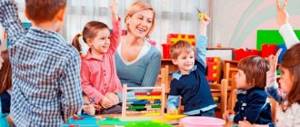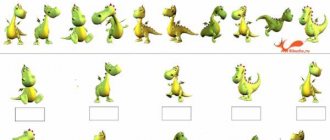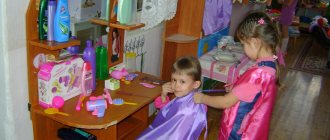Types of lesson analysis and self-analysis
In modern pedagogy, there are several types of lesson self-analysis, each of which affects a separate component of the entire lesson. Here is an approximate classification of types of introspection:
- Brief is the simplest type, giving the main assessment of the lesson: what were the objectives, whether all the stated goals of the lesson were achieved.
- Structural, or stage-by-stage - analysis of each stage of the lesson, each element, and, no less important, analysis of the relationship between these stages and elements of the lesson.
- Structural-temporal . During such self-analysis, the teacher analyzes the time spent on one or another stage of the lesson and the rational use of the allotted time. It helps to understand whether, for example, the homework check was too long, whether not enough time was allocated for the practical application of the new rule, or whether it was worth paying more attention to explaining the new topic.
- Combined is an assessment of the main didactic goal of the lesson and its structural elements.
- Didactic - analysis of the methods and techniques used by the teacher to achieve the main didactic goal: the formation of knowledge of knowledge.
- Aspect analysis is a complete and detailed assessment of a particular aspect of a lesson: for example, the use of developmental methods, the use of differentiated teaching techniques, checking students’ knowledge of learning, the use of problem-based learning technology, the use of ICT in the lesson, etc.
- Complete self-analysis . This type of self-analysis combines didactic, aspectual types of analysis, checking students’ knowledge of learning and assessing the effectiveness of the lesson.
- Psychological - evaluates how the teacher ensures the attention of students at each stage, how he conducts individual work, how motivation is used, etc.
- Comprehensive - combines all of the above types of analyzes. This type of self-analysis is used to evaluate a number of lessons (for example, when conducting teacher certification).
Conducting self-analysis
Self-analysis should include the following points:
- target;
- tasks;
- Preparation;
- communication part;
- physical education.
Teachers must be competent
It is imperative to include a person-centered approach.
At the end - summing up.
The analysis includes:
- Subject.
- Date and number of the group in which the event is being held.
- Target.
- Justification for the choice of topic from the point of view of psychology, i.e. must correspond to the general goals and objectives, the context of the topic being studied.
- Observation. This point includes checking how well the goals and objectives of the hour are revealed to the children, whether it encourages the pupils to do any activity, whether it is possible to measure intermediate results, and whether the pupils have drawn conclusions.
- Degree of controllability. How the lesson affected relationships in the group, how the children began to respond to art.
- General assessment of the event. Conclusions are drawn on psychological and pedagogical topics in relation to the teacher and students.
Note! In the process of work, the teacher must take into account the character characteristics of each child.
There are requirements for educators
Methodological aspects
In a preschool institution, goals and methods are established by the state program.
Stages of the method:
- Vocabulary, in the form of a conversation.
- Illustrating. Illustrations on the assigned topic.
- Practical. Modeling of figures related to the theme.
- During the game stage, didactic games on a general topic are used. This process includes a physical education aspect in the form of gymnastics for the fingers and eyes.
- Motivating and rewarding techniques are included.
- It is mandatory to include assessment and control of children’s personal actions and work.
Additional Information! When self-analysis, it is necessary to take into account that information should be presented in the form of a game, involving children in joint activities.
How is the procedure performed?
For correct self-assessment, you should initially decide on the purpose of the lesson. It should be clear and include the initiative of teachers to show educational achievements and innovations in raising children in the older or younger group. Another goal is to show the preparatory level of the teacher in a particular preschool institution.
Using analysis, you can check the following:
- children's readiness for school;
- compliance of the structure and techniques used with state standards;
- the teacher’s ability to interact with children;
- sense of time;
- control of voice timbre and intonation;
- the ability to create the necessary emotional background in a group.
Teachers must be qualified
As a result, shortcomings are identified or their absence is noted.
How the analysis is carried out:
- You are required to write down the age of the children and their number in the group.
- Mark the topics and targets.
- Describe the structure of the lesson, i.e. describe in detail the stages and each action.
- Study in detail the techniques used, describing the objects and theoretical materials used.
- Assess the level of organization and effectiveness of the event. This assessment includes the logic of construction, the speed of the lesson and the teacher’s speech, the emotional level, independence and activity of the children.
- At the end, inaccuracies are assessed and ways to eliminate them are proposed.
Modern technologies for speech development of preschool children according to the Federal State Educational Standard
Additional Information! As a result, the teacher offers an independent assessment of the work done, based on the children’s answers and the general emotional background of the group.
Stages of self-assessment
Self-analysis is a person’s independent assessment of his actions and judgments. The teacher needs to evaluate the children's behavior, the accuracy of their actions and their effectiveness in relation to their goals.
Stages of self-analysis:
- Characteristics of students in the group - number and age.
- The degree of compliance of the selected program with the general system of education standards.
- Checking the logic and validity of tasks and goals.
- Availability of didactic materials on the topic. Using music based on the theme, listening to classical melodies to depict natural features with the arrival of spring.
- Structure of the lesson. There are main stages. They are logically connected and smoothly transition from one to another. Each stage prepares children for the next. The time between them is distributed logically and used profitably. The lesson lasts no longer than 25 minutes. Children do not get tired because there is a change in activity, from exercises for speech development to games or drawing, etc.
- The atmosphere of the event. Pupils need to be interested, that is, in the process it is necessary to offer children a poetic form of speech and some surprises.
- It is necessary to determine speech and other activities and behavior. It is worth considering how many times and who was active, why the rest were passive, how other participants worked, what inspired them to act. The assessment is given only to the quality of the child’s actions, and not to the character or personality traits. Determine the form of children’s work in class: with a team, in a separate group, separately.
- Features of the teacher's actions. The presence of contact perception with children, speech characteristics (tempo, intonation and logic).
- Results. The achievement of goals and objectives, the degree to which the plan and tasks are completed by children are noted. The effectiveness of the techniques and methods used, the thoughtfulness of the presentation of the material. What was not realized from the plans set, and how to achieve this.
Note! Training should include a scientific aspect, a problem side, i.e., highlight weak points in children’s knowledge, clarity, a cognitive part, be understandable, systematic and step-by-step. The program must remain relevant without changing the overall goals and objectives. Federal standardization includes developmental and educational functions.
Fine motor skills of hands in children from 2 to 3 years old
Relevance
Monitoring allows you to identify strengths and weaknesses in the educational program of a preschool institution.
Relevance:
- To determine the success and effectiveness of the learning process.
- To train teachers (speech therapists, educators, etc.) to independently analyze and evaluate the dynamics of their work in education.
- Self-analysis of a correctly conducted lesson in kindergarten helps to carry out appropriate management of the state of the educational process.
- Makes it possible to predict the prospects for the development of objects or subjects of learning.
Important! The analysis should reveal the existence of conditions for joint partnership activities between children and adults.
Self-analysis of an open lesson should be carried out with an independent approach
Approximate lesson self-analysis algorithms
Self-reflection does not have to cover every aspect of the lesson. It all depends on what the open lesson is being held for: whether it was a lesson to confirm a category, or as part of a week in a subject, or as part of a festival of creative excellence, etc.
Here are some examples of algorithms that will help the teacher create his/her self-analysis:
Self-analysis of a lesson conducted as part of a competition, festival, etc.
- What is your teaching ethos, and how did the lesson help you reflect that?
- Explain the choice of lesson content and technology chosen.
- What methods and techniques are used in the lesson and evaluation of their effectiveness.
- What was/was not achieved?
- What could be changed during the lesson, are these changes necessary? If so, why?
Brief plan for a comprehensive lesson self-analysis
Choosing the topic of the lesson, its place in the program. The connection of this lesson with previous ones, and its influence on the following lessons.
Brief description of the class: number of strong/weak students; what features of the class were taken into account when planning the lesson.
A brief analysis of the goals and objectives of the lesson and assessment of their implementation.
The choice of lesson form and techniques/methods used in the lesson, the relationship between theory and practice. It is advisable to analyze the main stage of the lesson in more detail. This makes it easier to show the interconnection of all stages of the lesson, to show how the other stages worked towards the main, main stage.
Justify the choice of didactic material, TSO, and clarity. And how it helped achieve the stated goals.
How is the control of students’ knowledge organized (at what stage, in what form). Evaluate the effectiveness of the chosen method.
Psychological atmosphere in the lesson, student interest, communication with the teacher. Did you manage to avoid overload, fatigue, and maintain motivation?
Is the volume and content of homework correctly determined, taking into account the characteristics of the class and the degree of assimilation of new knowledge?
How do you yourself evaluate the results of the lesson: have all the problems been solved, if not, then why?
In a nutshell: prospects for your future activities.
Thus, self-analysis of the lesson helps the teacher to look at his lesson from the outside and objectively evaluate its “pros” and “cons.” This is reflection that allows you to highlight unaccounted for reserves, develop your own style, and form your own pedagogical credo.
Self-analysis of GCD in the senior group on FEMP “Journey to the Land of Mathematics”
GCD Self-Analysis
in the senior group
"Journey to the Land of Mathematics."
Program content:
1. Identify acquired knowledge and skills on the topics studied: spatial and temporal relationships, forward and backward counting, knowledge about geometric figures and the shape of objects, the composition of the number 5, the ability to correlate the number of objects with their corresponding number. Strengthen your knowledge of emergency phone numbers.
2. Develop mental operations, the ability to navigate in space.
3. Cultivate a friendly attitude towards each other, a desire to help.
The objectives of the NOOD are set in accordance with the educational program and long-term thematic planning for this educational area.
I chose the traditional form of conducting NOOD with the integration of the following areas:
— “Cognition” - generalization of knowledge on the material covered;
- “Communication” - staging monologue and dialogic speech, the ability to communicate with each other, with adults;
- “Socialization” - the ability to empathize with a friend, come to his aid;
- “Artistic creativity” - performing game exercises “Construction set”, “Beads”.
NOOD methods and techniques:
1. Verbal – questions for children, repetition and clarification, reminder, encouragement.
2. Visual – educational board.
3. Practical – solving mathematical exercises using didactic material.
4. Game - solving a problem - game situation throughout the entire lesson.
5. Methods of control and stimulation - analysis of completed tasks, children’s self-assessment of performance results, rewards for work.
NOOD structure:
1. The introductory part of the NOOD involved organizing children: switching attention and focusing on the upcoming activity, stimulating interest in it, creating an emotional mood. This was done using the game plot: complete the tasks of the little flower - the seven-colored one.
2. The main part of the NOOD is the independent mental and practical activity of children, aimed at completing all assigned tasks: the main part is consolidating previously learned material.
At this stage, several tasks were solved at once:
— generalization and reference to previously accumulated experience (knowledge of mathematical concepts);
— creating a situation of moral choice (the desire to intervene in the situation and influence it: to complete the proposed tasks);
— encouraging children to independently choose and use different ways of completing tasks;
— creating a situation of independently searching for a solution to the question posed (game exercise “Find the same amount”);
- creating situations of mutual assistance between children, using tasks where the results of individual and group work need to be interconnected (game exercise “Fun Rocket”);
In the middle of the lesson, in order to relieve static tension, increase mental performance, and reduce fatigue, a dynamic pause was held in the form of the game “Find Your Place” and a physical education session after the graphic exercise “Blob”.
For each moment of the NOOD, visual aids were selected that stimulated and activated children to think. Benefits are of sufficient size and in the required quantity. I think that their placement and use was rational, thoughtful in the learning space and in the educational environment.
Individualization of learning was manifested in providing assistance and additional explanation to children who had difficulty completing tasks. To achieve performance results for each child, a differentiated approach to learning was provided, expressed in the use of tasks of different levels of complexity.
3. The final part of the NOOD is a summary of the activities. I used the method of analysis and self-assessment of children’s capabilities. Children were asked to choose a star as a tool for assessing their own success:
— choosing a red star meant: “I think I did all the tasks well.”
- choice of blue: “I think that I coped well with the tasks, but with the help of the teacher.”
During the lesson, comfortable conditions were created for each of the children: organization of space taking into account their placement and movement.
Throughout the entire activity, children’s behavior skills were practiced (the ability to listen to the answers of others, listen carefully to tasks), and interest in the activity was constantly maintained. The presence of partnerships contributed to the instillation of goodwill towards each other.
The duration of the NOOD, content and material correspond to the age characteristics of children and the requirements of San Pin.
I believe that children can hear, understand and complete educational tasks, express their thoughts, listen to the answers of their comrades and help them. The guys worked enthusiastically, diligently, and actively.
The assigned program tasks during the lesson were completed. This was noticeable in the children’s answers, actions, and their desires to complete tasks.
Self-analysis of the lesson on the Federal State Educational Standard
- Indicate the topic of the lesson.
- Give a brief description of the class: how many children are in the class, the number of strong/weak students, what psychological characteristics of the students were taken into account in preparation for this lesson.
- Indicate the type of lesson according to the Federal State Educational Standard. Write how the lesson fits into the plan for studying the topic, how it will work for further study of the topic.
- Indicate the UUDs that were planned for the lesson and what methods were chosen to form them.
- List the methods and forms chosen for each stage? For what purpose was this or that method chosen, the expected results.
- Formulate what the main stage is and how other parts of the lesson work towards it.
- Analyze how rationally the time is allocated for each type of work and for each stage of the lesson. How logical is the structure, how are the connections between the stages of the lesson organized?
- What visual, didactic materials, TSOs were used in the lesson. Is the selection of these materials consistent with the intended purposes?
- Monitoring the learning of knowledge: at what stage of the lesson it was conducted, how it was organized, in what form.
- Your assessment of the results of the lesson: were the goals achieved? If not, please indicate the reason why the difficulty arose?
Self-analysis of the pedagogical activity of a preparatory group teacher
Self-analysis of the pedagogical activities of the preparatory group teacher for the 2019-2020 school year. year
The goal of my teaching activity is to create favorable conditions aimed at the development of children, taking into account their age and individual characteristics. Over the course of the year, children in preparatory group No. 2 developed according to their age and showed positive dynamics and good results in all areas of development.
The organization of the educational process was based on the requirements of the Federal State Educational Standard. The pedagogical process during the year was focused on the comprehensive formation of the child’s personality, taking into account the characteristics of his physical and mental development, individual capabilities and abilities, and preparation for school.
ECD was systematically carried out with children in accordance with the basic general education program and the approved schedule of direct educational activities .
The set goals were achieved in the process of implementing various types
of activities :
gaming, communicative, labor, cognitive-research, productive, musical and artistic.
group's work program was drawn up .
During the year, the daily routine and all sanitary and hygienic requirements for the stay of children in the GBDOU were strictly observed.
In my work, I used various forms of training: traditional, integrated, complex, combined. As well as various techniques: the use of clarity, playful, surprise moments.
Positive results were achieved through the creation of a subject-development environment . Educational work in the group was based on the creation of a special subject-development environment, long-term and calendar planning in accordance with the annual tasks of the kindergarten. Depending on the annual tasks of the kindergarten in our group, various centers were created or updated. The aesthetic environment I created evokes in children a feeling of joy, an emotionally positive attitude towards kindergarten, a desire to attend it, enriches them with new impressions and knowledge, encourages active creative activity, and promotes the intellectual development of preschool children. I creatively participated in the transformation of the group’s developmental environment, taking into account the characteristics of the upbringing and development of children in accordance with the Federal State Educational Standards and Education. To successfully solve the assigned tasks, a comfortable environment has been created in the group, which allows children to freely express their desires and develop their abilities and interests.
Conditions have been created to protect and strengthen the health and physical development of children. The group has a sports corner where there is sports equipment, didactic games and devices for physical education and recreational work. It is known that the development of a child occurs in his inherent activities: construction, visual activity, and play. The group has created conditions for the development of children’s creative abilities, taking into account the Federal State Educational Standard for Educational Education, these are the “Book Center,” “Theatrical Center,” “Security Center,” and “Music Corner.” Materials that stimulate children's development are located in different functional spaces accessible to children and correspond to the age of the children. The materials were constantly updated. The subject developmental environment of the group is provided with both general and specific material for girls and boys and is organized taking into account the opportunities for children to play and do what they love individually or in separate subgroups.
Throughout the academic year, we actively collaborated with social partners: children's library No. 2 named after. A.M. Gorky, Frunzensky district.
Throughout the year, children participated in competitions held at the State Budgetary Educational Institution and outside the kindergarten.
The kindergarten held many different holidays in which children participated, all of them took place not for parents, but with their involvement, so that they could feel and live this event together with the child. Parent meetings, conversations, and consultations were held for parents. According to the survey and questionnaire, parents are satisfied with the level of quality of the educational process.
The effectiveness of my work depends on how much I care about the personal and professional level. I get acquainted with the latest scientific and methodological literature. I try to improve my teaching skills through visiting methodological associations and open classes. I try by all available means to achieve interaction and agreement with parents in raising a common culture for children, in creating an emotionally favorable climate.
the assessment of my work in the joyful faces of the children who surround me; they are my main inspirers. Thanks to them, I want to create, create new things, make their life interesting and joyful. "My
children" feel free, comfortable, and relaxed in the group.
There are smiles on their faces, and this is the most pleasant thing in my profession. Our group has become a home for children, where they are loved and understood, where every child has the opportunity to fully realize themselves and their interests.








